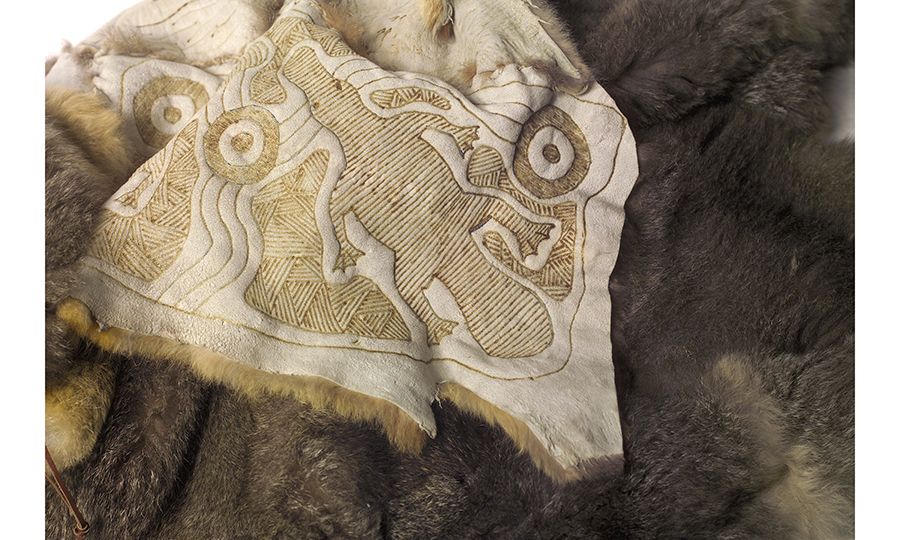This possum skin cloak was created by Indigenous artist Treahna Hamm and was made for use by a young child. The cloak is designed to be added to as the child grows, representing their expanding knowledge of country.
Possum skin cloaks were worn by Aboriginal peoples of the south-eastern states of Australia in pre-colonial times. The cloaks were used by both males and females and by all ages, from babies to adults. They were significant commodities, and were used both as clothing and to line one’s mia mia (place of living). Each cloak represented stories and sites of significance for individual clans (families), and was painted using local ochres from the tribal homeland. Mothers used the cloaks to carry their children; after death, people were buried in their cloaks.
Ceremonial cloaks are made differently today. As possums are now a protected species, pelts are imported from New Zealand. Instead of being tanned using traditional methods, the pelts are chemically treated, so traditional methods must be adapted to create the original essence of a possum skin cloak. The cloaks remain an important component of Aboriginal cultural practices.

Child’s possum skin cloak
Possum pelt
2010
AlburyCity Collection
The designs on the cloaks are related to tribal, personal and environmental totems, and each cloak is unique. This cloak’s designs are inspired by the local Indigenous community, their totems and environment. The shields are the hills surrounding the Albury region, while the centre is the meeting place (known locally as Mungabareena). Inside are people holding a ceremony with locally traded products; Bogong moths, shields and cloaks are drawn as well. Around the edge is the Murray River, sacred to the local Indigenous community, and local food sources of Murray cod and yabbies.
This cloak is a good example of a traditional craft being resurrected and becoming even more significant to Indigenous people today. The cloak is of spiritual significance to the community for which it was designed. It demonstrates a tradition that was once considered lost, but which has gained new life and interest for all the community.